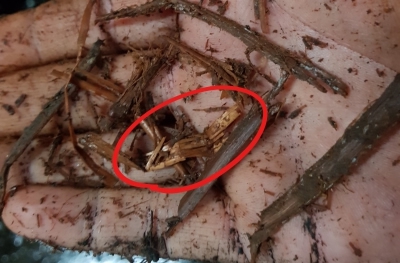Longer pre-wetting of straw to preserve structure during mushroom composting
In my 'Pre-wet' blog, I already wrote about the importance of pre-wetting for good mushroom substrate. In this blog, I would like to discuss the structure of straw. I often hear customers say: "We are shortening the pre-wetting time because the structure of the compost is too short." But I disagree with this statement. Why? Read all about it in this blog.
If the straw has a shorter pre-wetting period, the micro life is less likely to damage the hard wax layer of the compost. The idea is that the straw and, therefore, the compost stays longer.
The problem lies in the machines that process the straw. Proper mixing is done by rapidly rotating shafts that pick up the compost and spread it mixed, to optimise blending. Hard straw breaks in these machines, however, which results in shorter structure.
Further opening up the straw, by way of a longer pre-wet or by adding an additional dose of water a few days after the start of the pre-wet, softens the straw. Softer straw breaks less easily and therefore retains more structure.
Conclusion
We can compare straw with spaghetti. If we want to put spaghetti in a small pan, we can break it and it will fit, but the structure becomes shorter. Allowing the spaghetti to warm up a little first makes it soft, so you can get all the spaghetti into the pan without breaking it.
Nutrients
If the growing room is filled while there are still yellow straw sprigs in the compost that have not been opened up, this is a problem. The water is not absorbed by the compost; and in addition, the mycelium literally cannot grow in the straw. This prevents the mushrooms from getting any nutrients from the straw. You also continue to see the same yellow straw sprigs in the compost in the second/third flush. Non-opened compost only provides filling weight, but the mycelium cannot feed the mushrooms from it.
Mark den Ouden






















